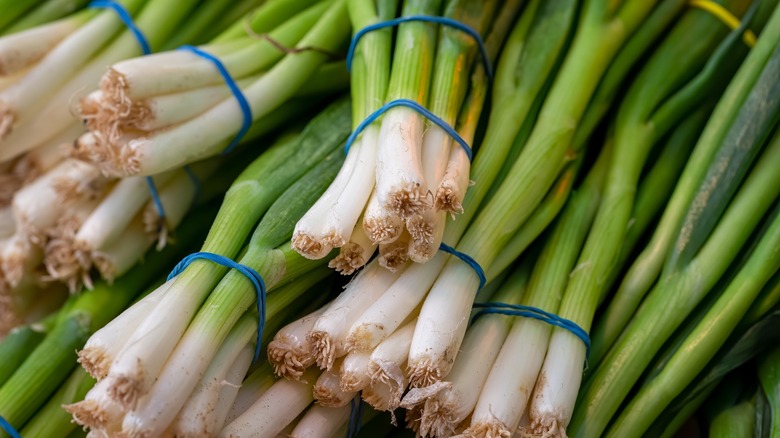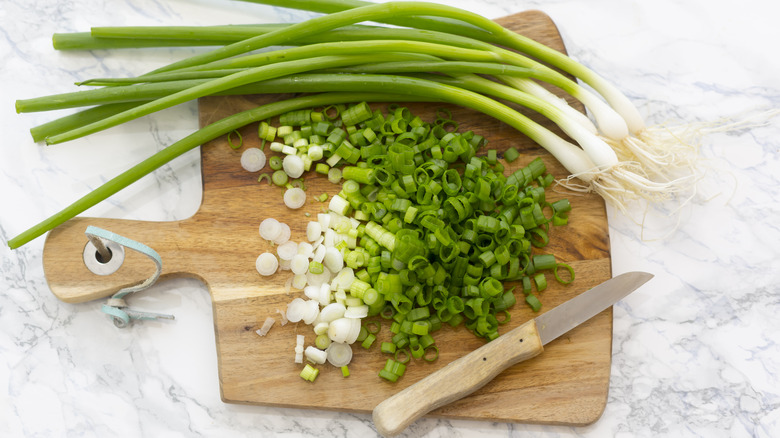White And Green Scallions Actually Have Different Purposes In Cooking
Chopping vegetables is pretty straightforward. But scallions, also called green onions, present a particular predicament. There's a firm white bulb and a softer, tubular green leaf. It's almost like it's two vegetables in one. In fact, sometimes, they serve different functions in a recipe. The white bulb, closer to a traditional white onion in flavor and texture, works well as a flavor-enhancer in soups, sauces, and sautés. The green leaves, which have a grassy, mildly spicy flavor, work nicely as garnishes on top of eggs, soups, rice, and saucy meat dishes.
Preparing scallions is pretty easy. Wash them and remove the roots and the thinnest, scraggly portions of the greens. You're now faced with a small white bulb, a sort of ombré section where white fades to green, and the green tubular leaves. The white part is crisper and more dense, and cuts like a miniature onion. Slice it crossways into rings or dice finely it. You can slice the long green leaf longways into thin strips or cut it crossways into small tubes or discs.
But what about the middle section, where white gradually evolves into green? The dividing line is up to you, but generally, as the stalk starts to firm up and become crunchy, you probably want to include it with the white. The nice thing is, when it matters, most recipes make it clear how you're supposed to divvy up this multipurpose veggie.
How to get the most out of your scallions
In most recipes, you're fine throwing in whichever bits of the scallion you prefer. The whites and greens taste a little different, but not so much that one or the other will ruin a recipe. The cuisine police aren't going to break down your door for tossing a whole chopped scallion into your scrambled eggs. But in doing that, you're only taking partial advantage of the diversity these wonderful plants offer.
The green leaves make excellent and flavorful decorative garnish over soups, eggs, dipping sauces, and stews. It's more colorful and stands out nicely on top of a dish. In contrast, the white part of the scallion provides a stronger flavor. Julia Child once suggested using the white part of a green onion in place of shallots. But if you're making a rice bowl or colorful poke bowl, separating the green and white parts makes for an attractive display. If you're making honey-soy chicken thighs, chopped green scallion is an attractive garnish and the better option. And if you're really adventurous, China's green onion coffee emphasizes the green part (let us know how that works out for you).

